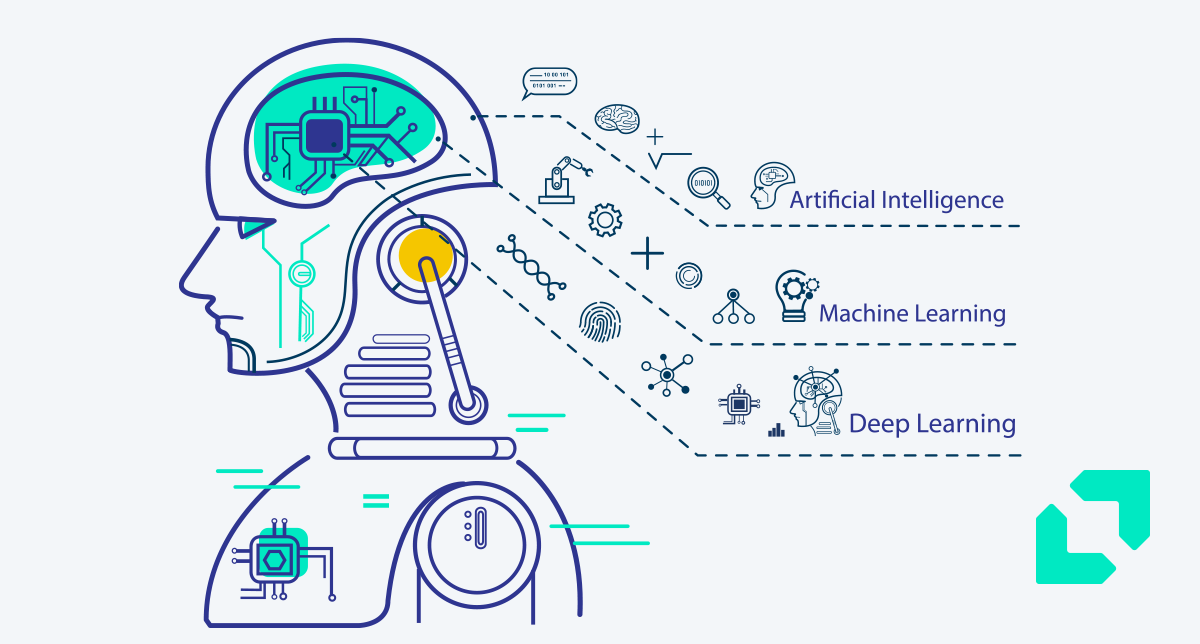Computing published an article featuring Andrew Dunbar, Appnovation's General Manager of EMEA, about how the productivity gains of automation ultimately need to be balanced with an understanding that the end goal is to get closer to a scalable customer base.
---
Originally published on Computing.co.uk
"Computer says no" may be an overdone gag, but it also perfectly sums up the dilemma facing enterprise decision-makers right now. With automation playing an increasingly central role in B2B infrastructure, the challenge remains as to how B2B brands can build a personal and authentic dialogue with their customers, whilst leveraging the potential of the latest digital innovation.
The productivity gains of automation ultimately need to be balanced with an understanding that the end goal is to get closer to a scalable customer base. The obvious route is through flexibility and responsiveness, which explains why there is a growing trend towards emotional targeting in the B2B arena - but alongside this evolution in approach, there are some very real pitfalls.
AI/machine learning is not so much displacing traditional human interaction as augmenting it. What this means for emotional targeting is that while the importance of conveying emotion and telling a relatable story remains, the challenge is one of how to do this, convincingly, at scale.
Automation and emotional targeting needn't be mutually exclusive, either. In fact, you could even fuse the two - combining the processing and interpretive power of automation, while leveraging your team's valuable time around the conversations where they add the most value. Weighted appropriately to the brand or customer, this approach has the benefit of really moving things forward. Get it wrong, however, and your competitors are waiting in the wings to offer a more streamlined, personal alternative.
B2C marketers are already well-versed in the art of automated emotional literacy. For example, a travel company might tailor personalised adventure content to their customers, based on an automated and segmented analysis of their tastes and preferences. By doing so, they build the basis of a rich relationship that is grounded in a sense of personal understanding. At the end of the day, personal connection is still the crown jewel of engagement, but the trick is to make that as efficient as possible.
There's no reason why B2B operators can't do the same, using personalised automated data profiles as a tool to turbo-charge their client relationships. At the heart of this process is the need to breakdown the customer journeys that your clients undertake, the challenges they are trying to solve and how you can add value in a way that differentiates your brand.
Here are the core building blocks that enterprise companies need to shape the groundwork for more personal and intuitive conversations:
Data and behavioural insights:
As we humans know only too well, emotion doesn't come cheap, and the same applies to deep learning. Emotionally-driven automation rests on the accurate dissection of vast data sets. User research, analytics and social listening can all be used in combination to get to know the enterprise customer at a deeper level. Who are the decision-makers and what drives their decisions in real-time?
Most companies these days don't suffer from a lack of data. The challenge is understanding how to really leverage the data to get the necessary value and insight hidden within. It's common for a brand to collect data across a multitude of channels but then struggle to aggregate the data in a meaningful way that can guide strategy.
Used with the right visualisation techniques, data can be an exceptionally powerful guide - giving B2B enterprises the hard science behind how their clients behave in different settings, and which products / ideas resonate with them the most.
Behavioural mapping also has currency here, allowing companies to reduce their reliance on the marketing ‘personas' that are traditionally used to define and segment customers. All too often human beings defy convenient labels - and marketers forget that personas were designed only to address a specific journey goal, not for broader application. We all wear different hats throughout our day, after all.
Behavioural mapping is an alternative way of identifying trends, and building a content-based personalised approach to determining when shifts are happening in real time. Say, for example, there's a correlation between a certain interest in one product, and the uptick in sales of a new subscription model a B2B company is trialling. Mapping can detect this curve and proactively develop it, while building a detailed customer profile to target more like-minded clients.
Biometric observations:
Biometrics is a way of making automation feel more human and less transactional, by responding appropriately to those individual motivations in real-time. Done right, biometrics empowers a smaller team to have more targeted and valuable interactions with customers. Voice recognition for example, goes way beyond simply understanding words now - it can assess the emotion underlying a call to a customer helpline. Similarly, movement tracking and the auto-detection of emotions through facial recognition are ways that AI can help enterprises understand their customers.
Having a clear picture of a customer's emotional state is vital when delivering a good user experience and it can also play into a company's marketing agenda. Understanding the mood of the customer at any given moment can determine the best time to send them a targeted piece of sales or service messaging. Worried about the business? Send them marketing messages that emphasise reassurance and support. Confident about growth? Why not present them with products and services that will allow for a wider connection with your brand.
Intuitive workflows:
The relationship between a company and its customers has traditionally focused on ‘us and them' - a disconnect where companies typically said yes before really knowing for sure that they could deliver.
All that has changed with just-in-time manufacturing, blockchain and the shift from on-prem to cloud. Indeed, cross-cloud hybridisation programmes such as Docker and Kubernetes create optimised conditions for collaborative workflow management.
Automation of these workflows is the current target, with the next stage of evolution being to link emotional understanding to the process. By understanding behaviour we hope to enable companies to identify what a customer wants before they've asked for it. Knowing exactly when a customer needs your products and services (and why) means it is possible to make timely approaches and interventions.
We're starting to see credible evidence of this in financial services, with fintech platforms able to stay ahead of their clients' needs by drawing on open banking, underlying data insights and solid understanding of the emerging channels that customers expect to engage on. The same goes for a building site supplier that draws on real-time data platforms to preempt when certain equipment needs upgrading or replacing. Gone are the days where people sit at a desk to do this - the modern business needs to understand that even mobile-first is really just an entry point, and that conversational commerce or text-analysis based recommendations are ways to lift your brand above the competition.
At the heart of this though, is an understanding of the behavioural map that informs intent, and how your brand is perceived by your customer before the transaction takes place.
Brand consistency:
In the world of automated customer experience, it's not just what you say but how you say it that matters. Get it right and the brand's personality will shine through. With the correct positioning, you engage your customer or prospect deeply around shared values, or even just a simple understanding of how to solve their immediate problems. Get it wrong and it can create a jarring disconnect that undermines trust.
With increasingly competitive markets, where each brand tries to find a differentiator, every interaction point needs to feel consistent in establishing the right emotional resonance.
If companies manage to get their tone of voice right, there are certain scenarios where emotionally-attuned AI may even trump human interaction and help deliver an experience more important than the product itself.
Final thought
One direct consequence of Covid-19 is an acceleration of the trend towards embracing digital innovation. Within that, the loss of so many face-to-face cues means there is a need to advance our online interactions both in depth of engagement, and in breadth of reach. There is a clear role for emotion in the automation of technology.
It's important, however, not to rush into a wider world of process automation without gaining a true understanding of how it supports a longer term business case.
Too many enterprises automate processes for the sake of it, and are disappointed with the end result. Before embarking on what is generally an expensive investment, it's important to identify and test automation's potential before pushing it out on a company-wide basis.
If it transpires that existing workflows are fit for purpose, then run with them - with emotional consideration as a central part of your offering.


